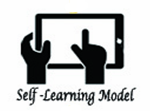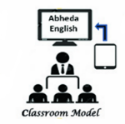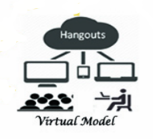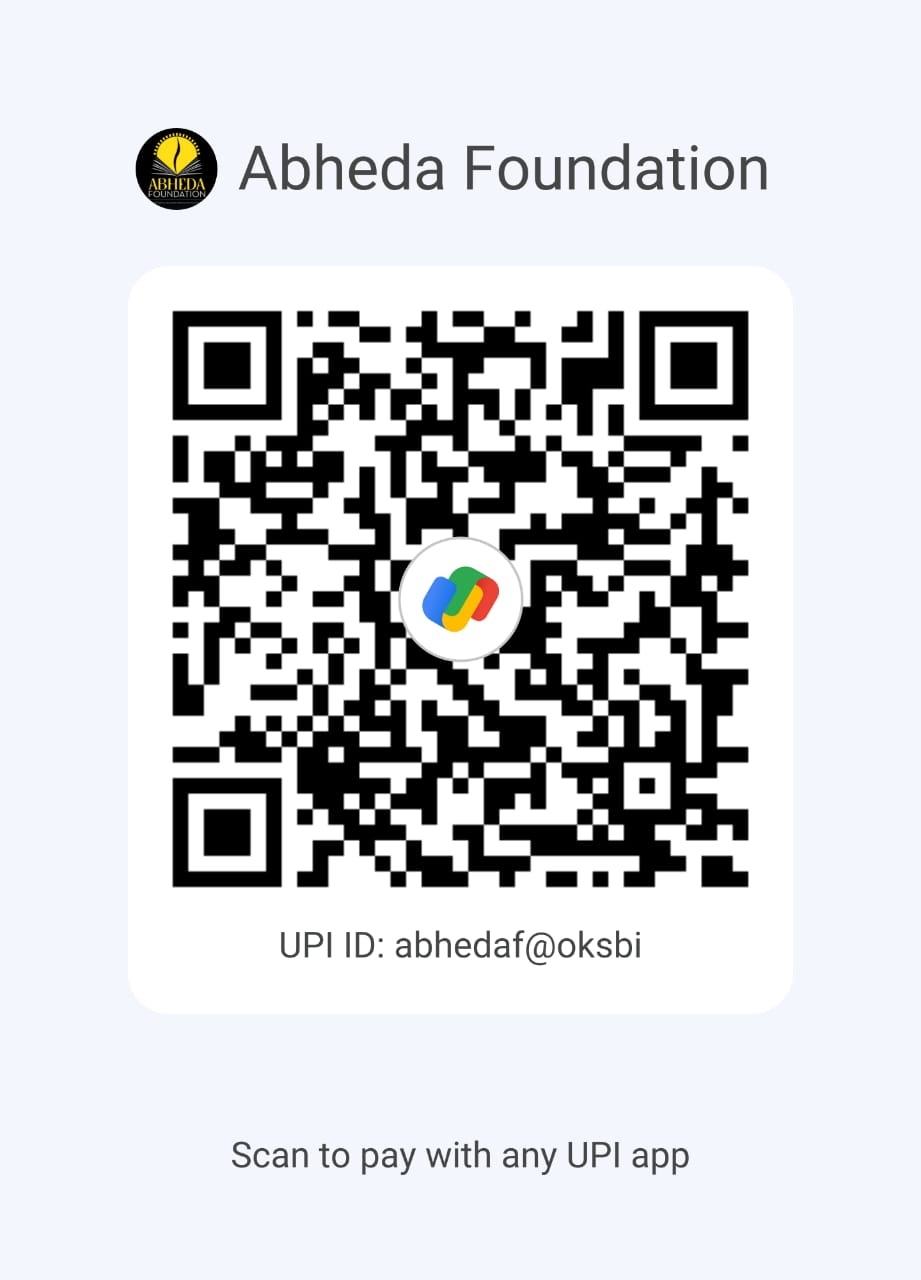HOW WE DO
Abheda’s operating model hinges on 7 pillars – 1) Products and contents, 2) Content Delivery Models, 3) Teachers and Volunteers, 4) Students, 5) Projects, 6) Sponsorship and 7) Partnerships.
Apart from running a scholarship program Abheda does two activities mainly – i) Content Development and ii) Content Delivery. Both of them happen in the form of projects. For example, through an internal project, Abheda has developed on Android platform digital contents for teaching English, which are branded in the product names of ‘Abheda English’ and 'English CourseTutor' and are being used for supplementary teaching (tuition mode). Similarly, through an external project, these products are delivered to the underprivileged either through collaborating partners (NGOs) or through Abheda’s own resources. These underprivileged students can act as Individuals or reside in Schools for Underprivileged, Home for Underprivileged, Coaching Centres for Underprivileged and Abheda’s own Abheda eSchools, which can be collectively termed as Centres. There are three Content Delivery Models through which products are delivered to these Centres in the form of projects, not all products being suitable for all Content Delivery Models and not all Content Delivery Models being applicable to all types of Centres.
CONTENT DELIVERY MODELS :
SELF LEARNING MODEL, CLASSROOM MODEL, VIRTUAL MODEL
 Self-learning Model – By this Model Abheda’s two products, meant for supplementary teaching alone, namely Abheda English and Abheda Mathematics (and not Abheda Primary), are loaded onto low-cost handy tablets and then given to Individuals for self-learning. Also, anybody – even one unconnected with Abheda - can download Abheda English and English CourseTutor (and Abheda Mathematics in future) on his/her own tablet/mobile phone and learn/teach contents. Though individuals are targeted essentially, inmates of a hostel, a home (tutorial or orphanage) or a Self-help Group (SHG) can avail of and share these tablets, but primarily the nature of content delivery here is one to one – tablet to individual – because at one point of time one student is directly learning from one tablet. In this model, there is no need for a teacher being present at the time of learning. The role of a volunteer in this model is to monitor the progress of the Individuals. A phenomenal success is being observed for Abheda's own scholarship holders, who, owning individual Android tablets, self-learn the English-teaching apps and are monitored and assessed regularly. This is the most effective model for learning, however, the cost is the highest here.
Self-learning Model – By this Model Abheda’s two products, meant for supplementary teaching alone, namely Abheda English and Abheda Mathematics (and not Abheda Primary), are loaded onto low-cost handy tablets and then given to Individuals for self-learning. Also, anybody – even one unconnected with Abheda - can download Abheda English and English CourseTutor (and Abheda Mathematics in future) on his/her own tablet/mobile phone and learn/teach contents. Though individuals are targeted essentially, inmates of a hostel, a home (tutorial or orphanage) or a Self-help Group (SHG) can avail of and share these tablets, but primarily the nature of content delivery here is one to one – tablet to individual – because at one point of time one student is directly learning from one tablet. In this model, there is no need for a teacher being present at the time of learning. The role of a volunteer in this model is to monitor the progress of the Individuals. A phenomenal success is being observed for Abheda's own scholarship holders, who, owning individual Android tablets, self-learn the English-teaching apps and are monitored and assessed regularly. This is the most effective model for learning, however, the cost is the highest here.
 Classroom Model - By this Model one needs to attach a tablet (or an Android environment) to a TV for larger projection and then a teacher – or a demonstrator, may not be all that qualified – teaches Abheda’s products, loaded on an Android box to a group of Students in a batch. This is physical teaching in supplementary mode, and in this model, students can reside in all types of Centres except being Individuals. Abheda eSchools follow this model, as we serve a good number of students through limited resources. These resources include Android tablets and desktops apart from the TV and Android box. The tablets and the desktops are used for regular practice sessions. In this model, the progress of the Students is slower than that in the Self-learning model. However, this is a more cost-effective model.
Classroom Model - By this Model one needs to attach a tablet (or an Android environment) to a TV for larger projection and then a teacher – or a demonstrator, may not be all that qualified – teaches Abheda’s products, loaded on an Android box to a group of Students in a batch. This is physical teaching in supplementary mode, and in this model, students can reside in all types of Centres except being Individuals. Abheda eSchools follow this model, as we serve a good number of students through limited resources. These resources include Android tablets and desktops apart from the TV and Android box. The tablets and the desktops are used for regular practice sessions. In this model, the progress of the Students is slower than that in the Self-learning model. However, this is a more cost-effective model.
 Virtual Model – By this model a physical classroom is transformed into a virtual classroom with students being present in the classroom and the teacher, spotted by Abheda’s network, residing at any corner of the world. The classroom has a desktop or a laptop connected to a large-screen TV as a monitor, to a webcam and to the internet for transferring live movements of the teacher to the desktop on real time through video conferencing. Desktop and TV may, however, be substituted by a Smart TV. And the teacher teaches the product Abheda Primary via his/her setup of desktop/laptop/tablet, internet and webcam. Teaching other subjects is also possible. This is virtual teaching in Curriculum-based mode, and in this model, students can reside in all types of Centres except being Individuals, although in SSHs not only students will come to study in this model, teachers will also visit a local place to teach students belonging to other parts of the world. The role of a coordinator in this model is to maintain the infrastructure, take attendance, manage students during a session, report student progress and conduct exams.
Virtual Model – By this model a physical classroom is transformed into a virtual classroom with students being present in the classroom and the teacher, spotted by Abheda’s network, residing at any corner of the world. The classroom has a desktop or a laptop connected to a large-screen TV as a monitor, to a webcam and to the internet for transferring live movements of the teacher to the desktop on real time through video conferencing. Desktop and TV may, however, be substituted by a Smart TV. And the teacher teaches the product Abheda Primary via his/her setup of desktop/laptop/tablet, internet and webcam. Teaching other subjects is also possible. This is virtual teaching in Curriculum-based mode, and in this model, students can reside in all types of Centres except being Individuals, although in SSHs not only students will come to study in this model, teachers will also visit a local place to teach students belonging to other parts of the world. The role of a coordinator in this model is to maintain the infrastructure, take attendance, manage students during a session, report student progress and conduct exams.





